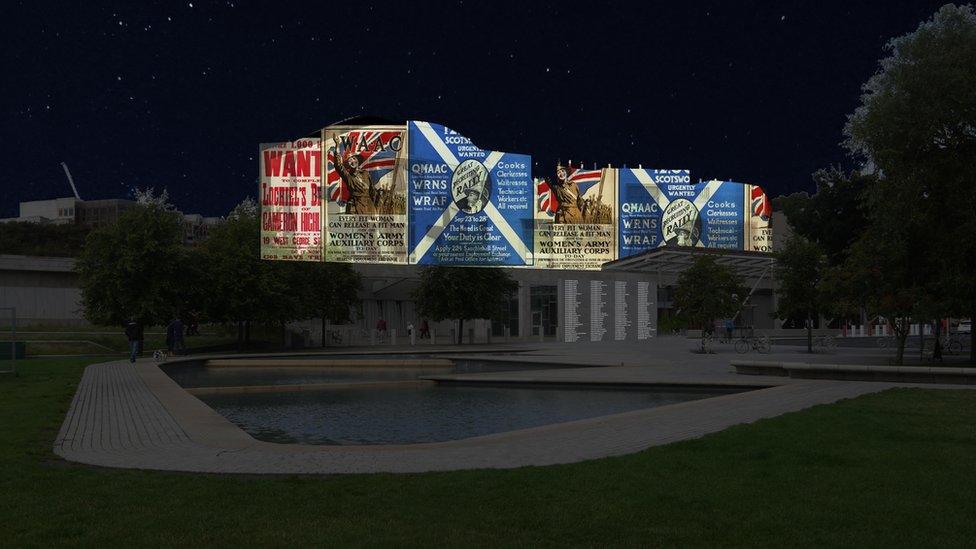How many Scots died in World War One?
- Published

Thousands of Scots died during World War One
The names of 134,712 men and women who died in World War One will be projected on to the Scottish Parliament building on Armistice Day but what does that figure represent?
The death toll of Scots in WW1 has long been controversial, with many claiming that Scotland suffered disproportionately compared to other parts of the UK.
Lt Col Roger Binks has spent five years reviewing the 147,000-plus names on the National War Memorial's rolls of honour, updating entries and identifying duplicates of people who were in more than one regiment.
He believes his new figure is closer to being accurate than previous ones.
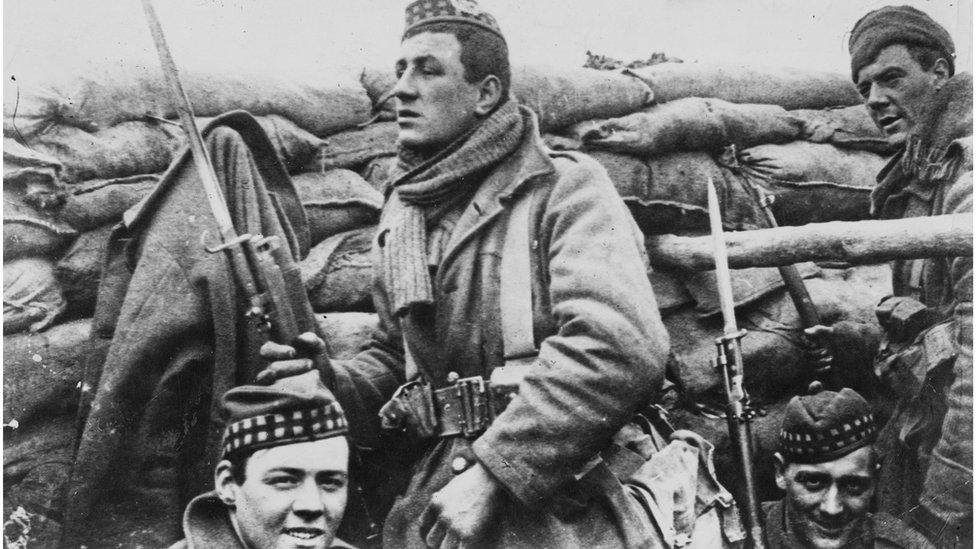
"I don't believe that there is an absolute figure," he said.
"I don't think there ever can be."
However, even the new figure comes with a great many strings attached.

Lt Col Roger Binks has spent years going through the rolls of honour
It does not just include Scots who died in the trenches or at sea, but also lists nurses, about 500 munitions workers, the Merchant Navy and many others.
In addition it is likely that the death toll from Scottish regiments like the Black Watch would have included Englishmen and people from other countries.
Col Binks says the memorial is to the memory of "Scots" - and the definition of a Scot is quite wide.
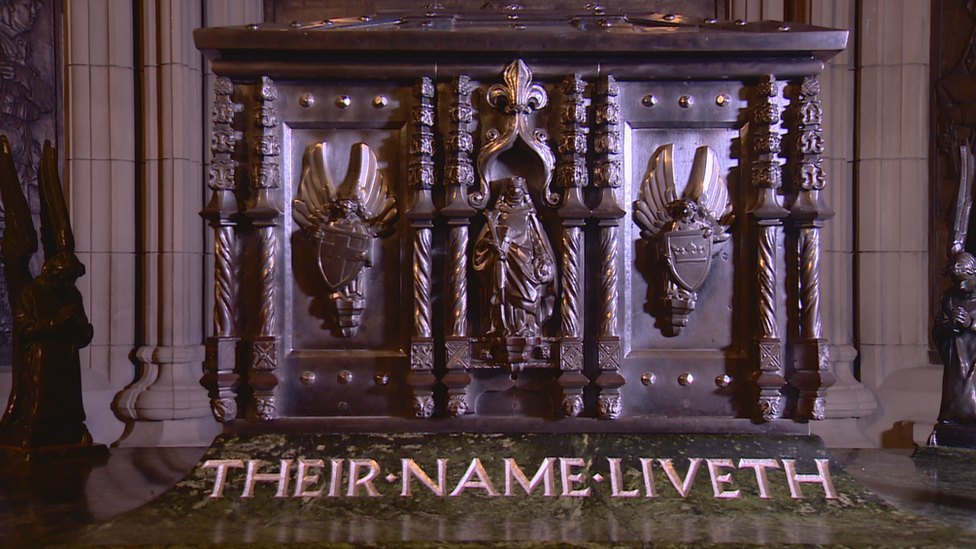
The National War Memorial is inside Edinburgh Castle
"Anyone who served in a Scottish regiment is deemed to be a Scot," he says.
"It does not matter whether they came from Bermondsey, Birmingham or Ballater."
Col Binks says that as well as the 12 Scottish infantry and cavalry regiments there were also Scots in the Royal Navy and the flying corps on the roll of honour.
He says these Scots would more than likely have had a Scottish birthplace but could also be included because of a Scottish father or mother.
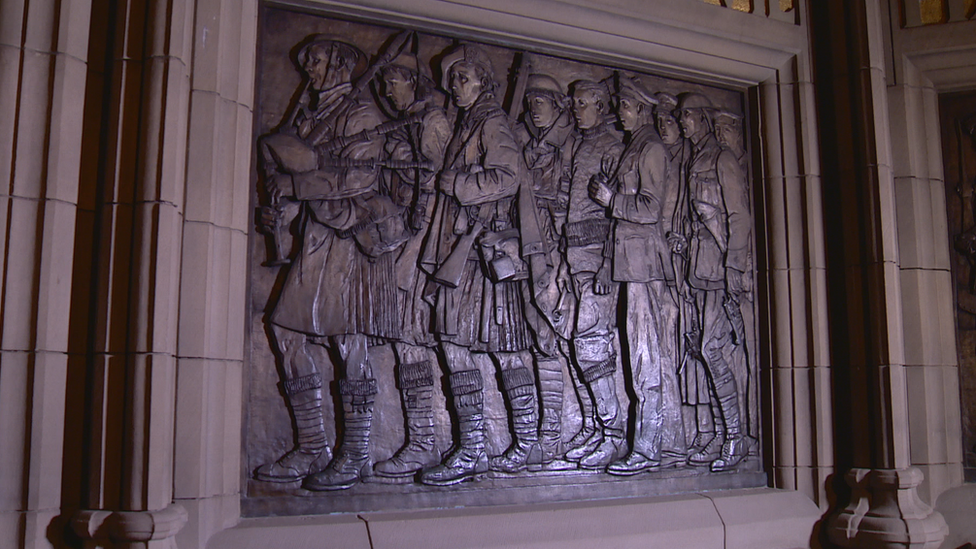
"It's a very complicated process especially when some of the information is not known to us," he says.
"For example, the majority of the officers' roll had no places of birth notified to us whatsoever and in some cases not even a theatre of death, so we were up against some difficulties."
The Scottish National War Memorial was opened in Edinburgh Castle in 1927.
Its original aim was to commemorate Scots and those serving with Scottish regiments who had died in WW1, from the declaration of war on 4 August 1914 to the Treaty of Versailles on 28 June 1919.
Confirmed military suicides and those tried and executed were not included.
Within the memorial is a sealed casket containing the Rolls of Honour listing soldiers and sailors killed in WW1
There is also a roll of honour in the hall of the memorial.
After World War Two another 50,000 names were inscribed on the Rolls of Honour within the hall and further names continue to be added there.
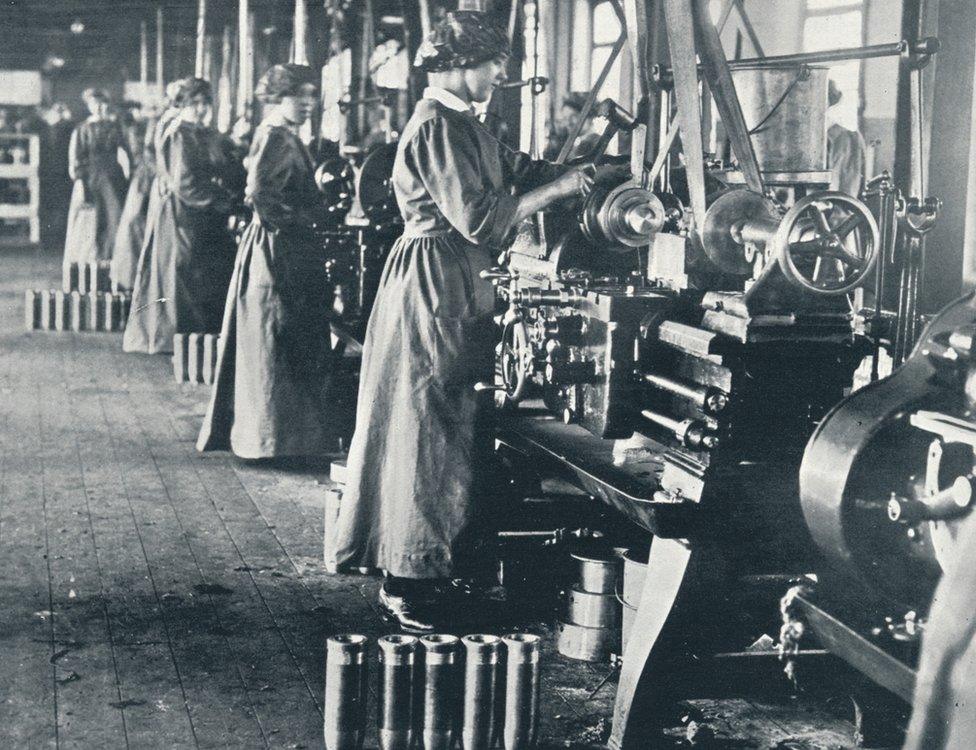
Women killed in munitions work were included in the roll of honour
When the memorial opened the criteria for appearing on the roll of honour was
A member of the Armed Forces of the Crown or of the Merchant Navy
who was either a Scotsman (i.e. born in Scotland or who had a Scottish-born father or mother)
or served in a Scottish Regiment
and was killed or died (except as a result of suicide) as a result of a wound, injury or disease sustained in a theatre of operations for which a medal has been or is awarded
or whilst on duty in aid of the Civil Power.
The original rolls were compiled from War Office lists as well as from the Commonwealth War Graves Commission.
The lists were checked over by regiments.
"Some were very thorough and some were not so thorough," says Col Binks.
"That has led more recently to many changes and amendments."
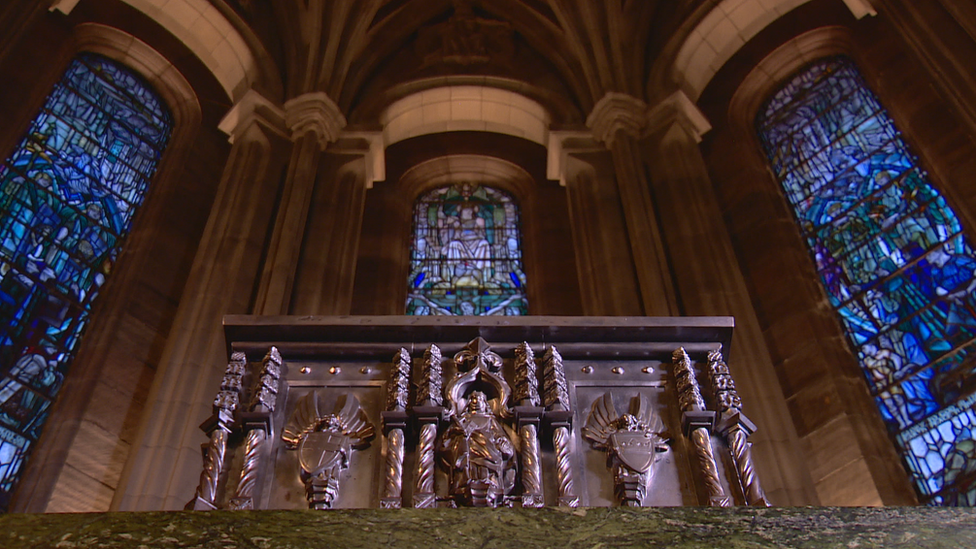
The National War Memorial opened in 1927
Even today names from WW1 and other conflicts are still being added by the trustees of the memorial, which is run as a charity.
"This year alone I have had 50 additions to the rolls and I think there are more," Col Binks says.
Lt Col Colin McGrory, secretary to the trustees of the Scottish National War Memorial, says people want the sacrifice made by their relatives to be remembered and are disappointed if it is not.
He says: "That's where we do everything we can to then start the process to establish that individual has the credentials to be in here and then we add him in and it means a lot to the families."
Col McGrory says it would be extremely difficult and time-consuming to reassess the numbers using a different criteria.
"What we have got at the moment is a very good figure. We have added on far more detail - place of birth, places of death, spelling mistakes have been corrected.
"It will always be a living figure."
He says the army now has a "100% rigorous" documentation procedure after a war death but that was not the case in WW1.
"In the 1920s they took the information from the regiments and they had a very good first stab at a roll of honour and it has improved ever since."
- Published2 November 2018
